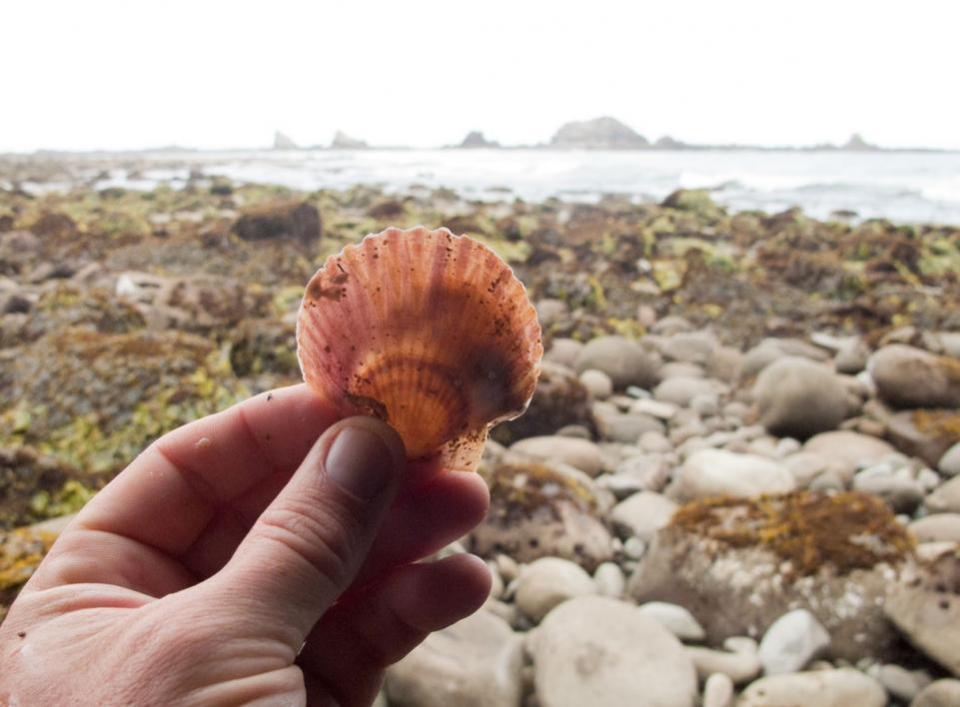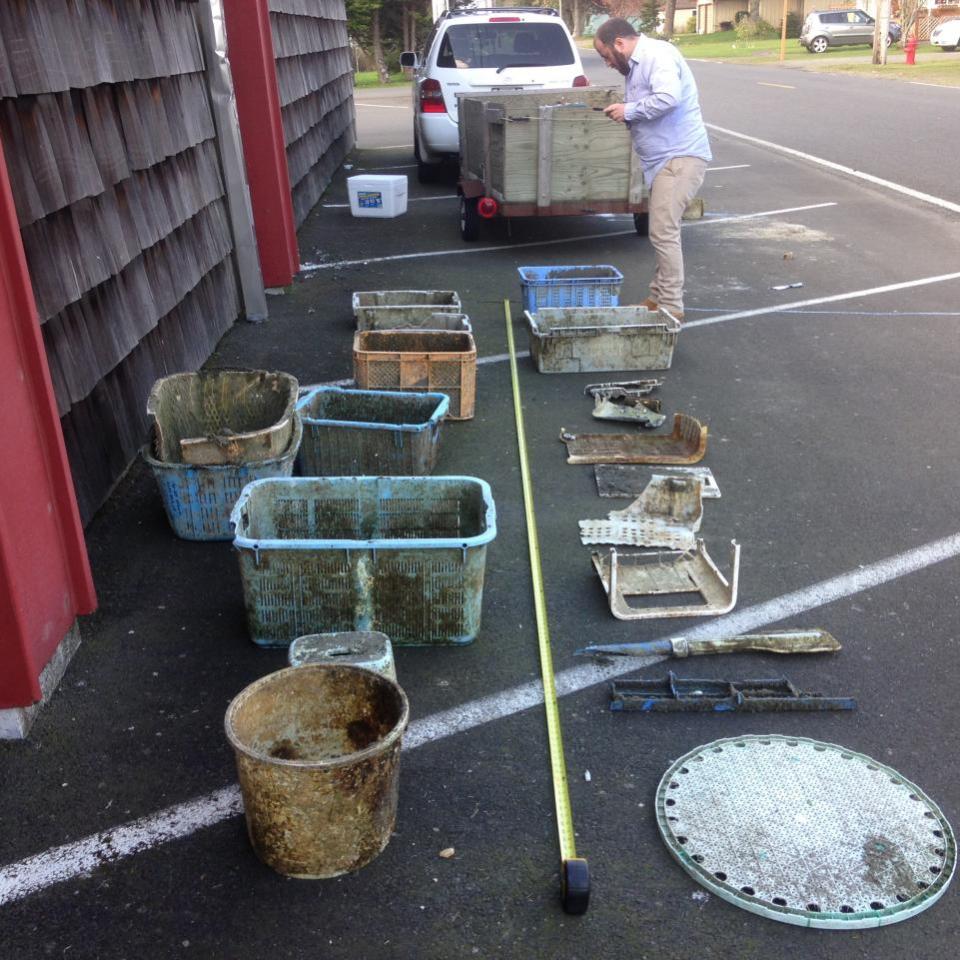Japanese Tsunami Debris Carried New Species to U.S.
March 11, 2011, had started like any other for thousands of mussels along the Japanese coastline, another busy day clinging to docks and straining snacks out of the water. Until 2:46 p.m. local time, that is, when two warring chunks of the Earth’s crust set off six minutes of ground-shattering quakes, then a series of gigantic waves powerful enough to crush three-story buildings and rip docks off their coastlines.
That’s when those mussels set off on an incredible adventure across the Pacific Ocean. In the six years since the tsunami, debris has landed all along the western coast of North America and on the beaches of Hawaii. And according to a new study of the tsunami’s aftermath published today in Science, just a small sample of that debris—much of it plastic—has carried living individuals of almost 300 species.
"What we report is really sort of a minimum picture of what may have arrived," James Carlton, lead author on the project and a marine ecologist at Williams College, told Newsweek. And the debris is still arriving, even today. "We had no idea it would last until 2017 and beyond, as we now expect."

The long trail of rafting debris means that hundreds of species are getting the chance to stake out a foothold in new ecosystems. Scientists have known for a long time that species hitch rides on logs, but it’s usually incredibly difficult to actually track a piece of debris from take-off to landing. "Nobody has ever witnessed these events," says Martin Thiel, an ecologist who studies species movement at the Universidad Catolica del Norte in Chile and who wasn’t involved with the study. "This is really the first large-scale event that we are basically witnessing as it unfolds."
That’s because the tsunami debris has generally been relatively easy to identify. In many cases, an entire dock or boat washed ashore, complete with registration numbers or other identifying information the scientists were able to verify with the Japanese government. The team examined 634 pieces of debris, all believed to stem from the tsunami.

Then, they tallied the animals each piece was carrying, aided by a network of 80 scientists from around the globe who identified species. The team also noted which were alive—critters from 289 species, all told. Those aren’t necessarily creatures that made the whole journey, they may also be descendents born on the voyage.
But whether long-haul travelers or newborns, that’s 289 species (and likely many more on unstudied debris) with the opportunity to try to build a new life for themselves where they landed. Most won’t make it, but several could settle down—and a couple of those could in theory become the next headline-making invasive species, able to thrive so well they make species that have been there for centuries suffer. Unfortunately, beyond species that have already invaded elsewhere, like the Mediterranean mussel, invaders don’t carry red flags—Carlton compares the process to "ecological roulette."

"It's very difficult to predict what species will blossom in the absence of predators or competitors that really could be eyebrow-raisers," he says. That’s why scientists monitor coastal habitats, on the lookout for early signs of an invasion. "Should something novel show up we expect that we would hear something on a fairly timely basis."
But what’s been particularly striking to scientists is how much and what kinds of debris are still washing ashore six years later. Natural debris like wood petered out after the first few years, since it breaks down en route. But thanks to our modern reliance on plastic, the debris keeps coming. "We have basically a huge armada of plastics, and those are the ones that have been making it along this very long trip," Thiel says.

And tsunami debris is just one tiny portion of all the plastic in Earth’s oceans, which means the same odysseys being documented here could be more regular than we realize. "We know that plastic in the ocean is not a good thing for many different reasons, and this is one of the reasons," Thiel adds.
The shift from natural debris to plastic aside, Carlton says that much of what the scientists saw wasn’t predictable. "Just when you think you've seen everything here comes something else new," he says—like a sudden rush of debris covered in sometimes hundreds of orange-spotted sea anemones that came ashore during the spring of 2016, the first time the anemone was spotted.

"The tsunami event was this obviously human tragedy, but the phenomenon that [Carlton] and others were able to document gave us insight into the way that species move around in our world," says Cathryn Clarke Murray, a marine ecologist at the North Pacific Marine Science Organization in Canada, which has been supporting Carlton’s research and other projects studying the impact of tsunami debris. "It really changed our perception of coastal ecology."
Carlton and Thiel both note that the study is particularly timely given the paths of Hurricanes Irma and Maria across Florida and the Caribbean, knocking plastic and other debris into the ocean as they go. That’s perfectly positioned to hitch a ride on the Gulf Stream and land in Europe. And if current trends continue, more and more of that debris will be long-floating plastic. "Really, it's a story about what the future could hold," Carlton says.
Related Articles


